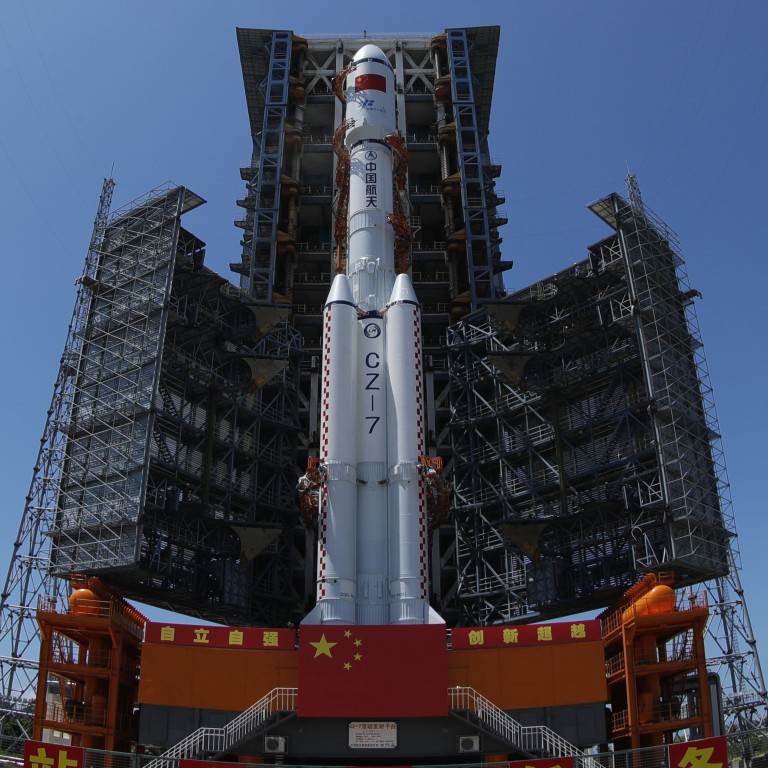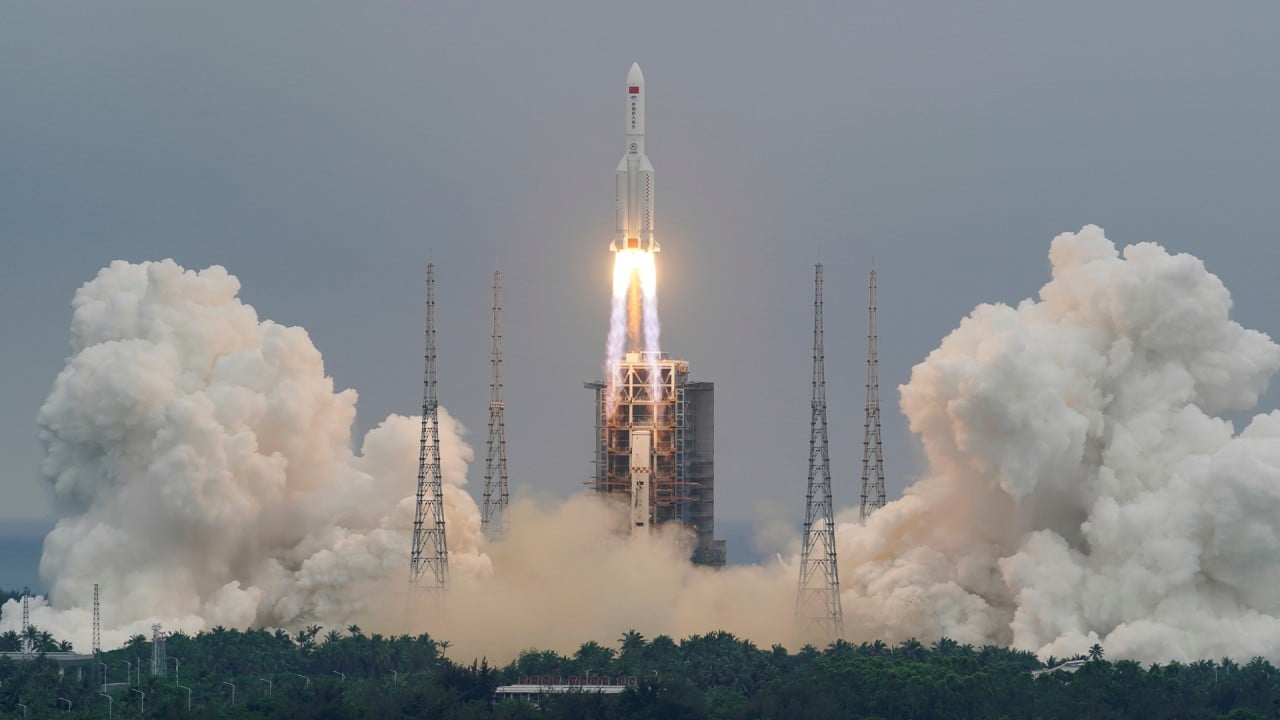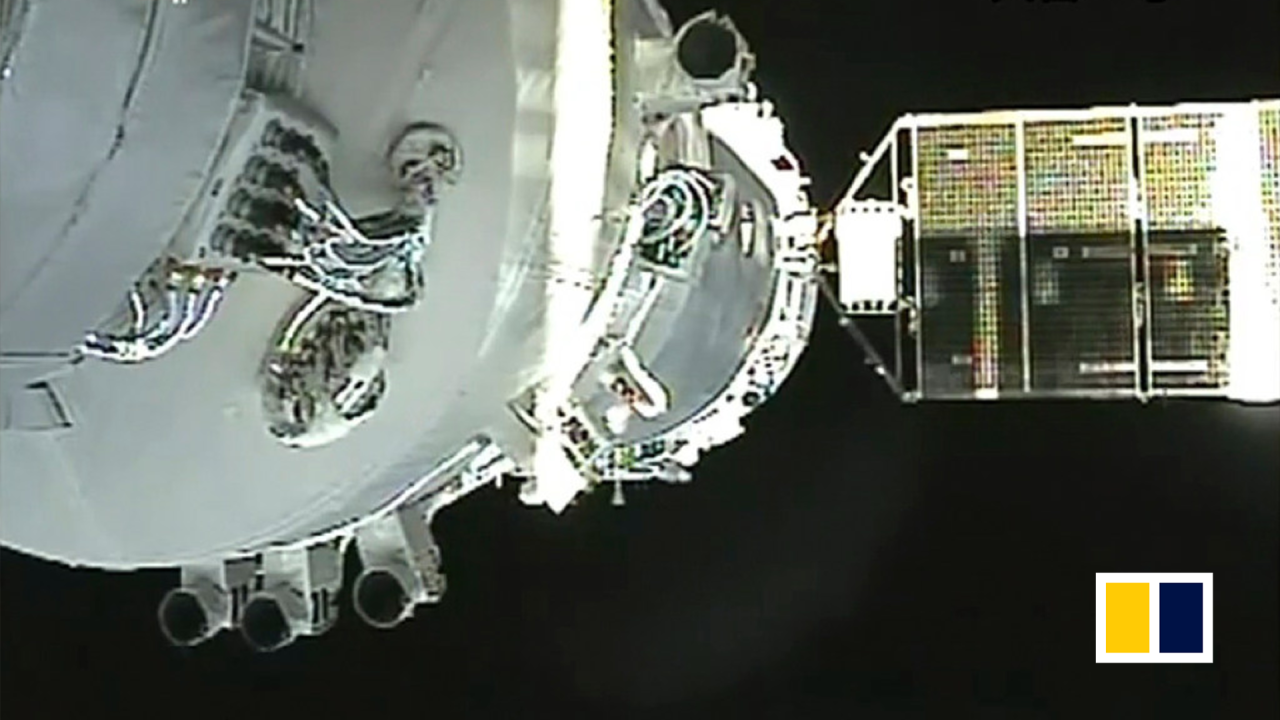
China postpones launch of cargo spacecraft supplying Tiangong Space Station, citing ‘technical reasons’
- Tianzhou 2 craft was supposed to launch from Hainan, loaded with fuel, parts, equipment and life supplies to sustain astronauts
- New launch time ‘will be determined later’, Xinhua reports
The Tianzhou 2 was expected to launch from the Wenchang spacecraft launch site in the southern island province of Hainan using a Long March 7 (CZ-7) vehicle rocket sometime early on Thursday.

02:05
Debris from China’s Long March rocket lands in Indian Ocean, drawing criticism from Nasa
“The launch of the Tianzhou 2 cargo spacecraft has been postponed due to technical reasons, and the launch time will be determined later,” state news agency Xinhua reported, citing the China Manned Space Agency.
The launch was planned as the second of 11 needed to complete the Tiangong (meaning “heavenly palace”) station, following the core module that was launched in April.
The first unmanned cargo ship was loaded with 4.7 tonnes (5.2 short tons) of spare parts for the station, laboratory equipment and life supplies that could sustain three astronauts for three months, in preparation for the next launch: a manned spaceship with three crew members to become the station’s first group of residents.
Lift-off for China’s Tiangong Space Station ambitions
Besides those parts and supplies, the Tianzhou 2 was also meant to carry nearly 2 tonnes (2.2 short tons) of fuel to resupply the station by connecting to its engine via robotic pipes.
The core module of the Tiangong, named Tianhe, was sent to space on April 29, carried by a Long March 5B (CZ-5B) heavy-lift rocket because of its large size and weight.

01:24
What the Tiangong-1 space station meant for China’s ambitions
The Tianzhou 2 was to be the third mission of the CZ-7, a two-staged medium-lift rocket powered by low-temperature kerosene and liquid oxygen fuel. It will also be used for all three future cargo spacecraft for the Tiangong.
China was excluded from the International Space Station and started its own space station project in 2006. The Tiangong is the country’s first permanent space station after two pilot predecessors, Tiangong 1, from 2011 to 2018, and Tiangong 2, from 2016 to 2019.
Once the 100-tonne (110-short ton) station is completed, it is expected to be in operation for at least 10 years, with the capacity to host three permanent residents and three visitors.

